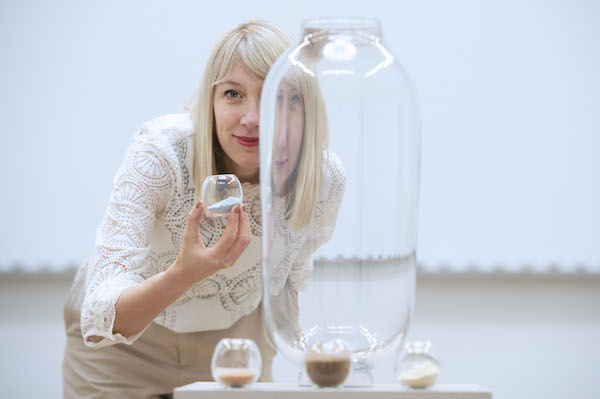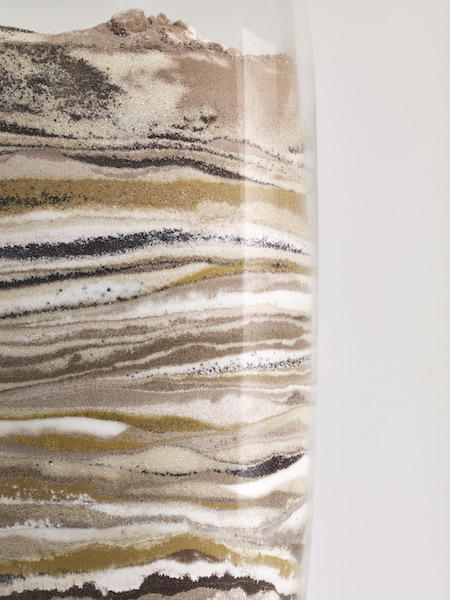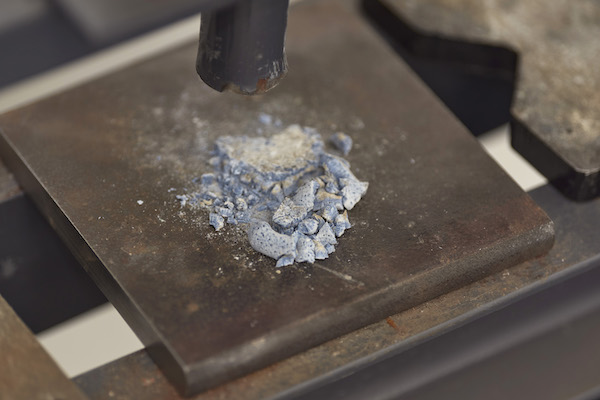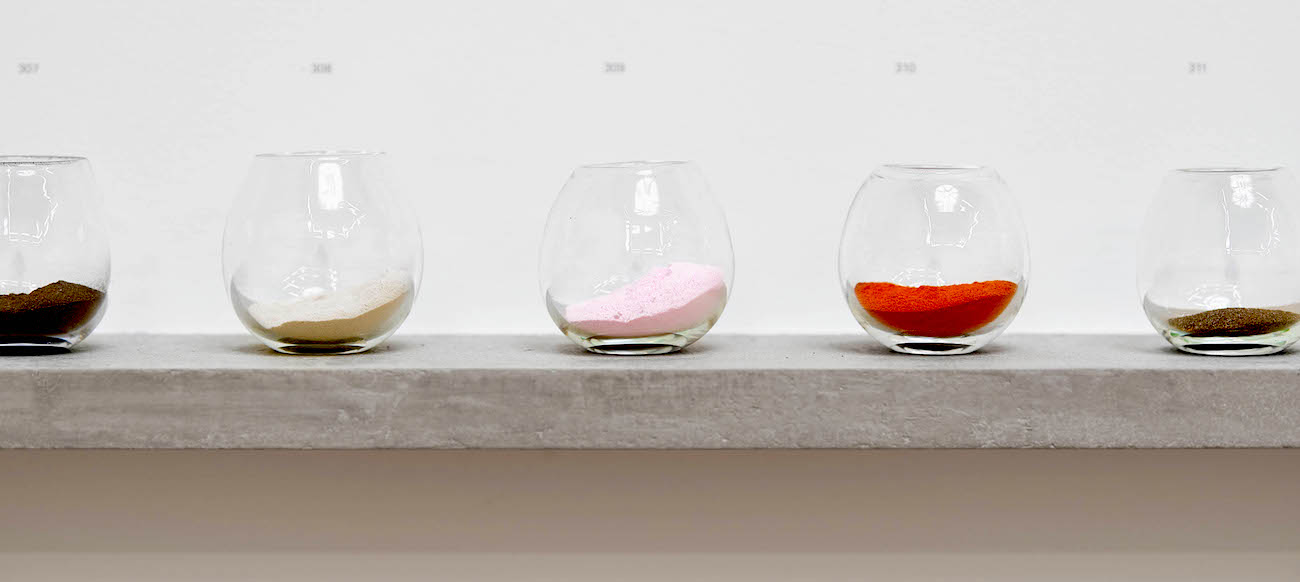Featured photograph by John Mackenzie.
In May 1655, on an otherwise unremarkable day, Thomas Browne—physician and antiquarian—received a visitor. The visitor’s name is lost to history, but they brought with them between forty and fifty clay urns, now also lost, recently discovered buried in a field at Walsingham. Their provenance was a mystery, and Browne was known throughout Norfolk as an authority on things unusual and strange. The urns contained a mix of ash and bone, and Browne immediately broke off what he was writing (a study of repeating patterns in nature) to investigate. His first thought was not for the urns themselves, but for the last people to see and handle them so long ago. “When the Funerall pyre was out, and the last valediction over,” he wrote in the dedication to Urne-Buriall, his uncategorizable essay on mortality that followed, “men took a lasting adieu of their interred Friends, little expecting the curiosity of future ages should comment upon their ashes.”
*
For Plato, memory was a soft surface like clay or a block of wax. “Whenever we wish to remember,” he has Socrates explain in the dialogue with Theaetetus, “we hold this wax under the perceptions or ideas and imprint them on it as we might stamp the impression of a seal ring. Whatever is so imprinted we remember and know so long as the image remains.” Walter Benjamin insisted that “memory is not an instrument for exploring the past, but rather a medium. […] just as the earth is the medium in which ancient cities lie buried.” Whereas Virginia Woolf wrote that “life is a bowl that one fills and fills and fills, and memory is the base on which it stands.”
*
Katie Paterson’s Requiem* does not contain bodies, but along with traces of Earth’s long history it contains human remains: the legacy of the Anthropocene. From ubiquitous and durable synthetic materials like plastic and concrete to the anthropogenic carbon that is radically altering the global climate, Requiem’s contents describe a world that is becoming more and more human.
(*On view at Ingleby Gallery in Edinburgh until June 11.)
*
Katie’s Edinburgh studio is a small space with a pitched ceiling and light pouring in from high windows. At the far end is a twelve-ton hydraulic press and a stone pestle and mortar. Row upon row of glass jars line the other three sides, their contents brushing the white walls with color—mostly rust, caramel, and ash, with the occasional pop of bottle-green or Pepto Bismol-pink. The whole world—all of planetary history—is present in a single room.
 Photo by Neil Hanna.
Photo by Neil Hanna.
The banks of jars—some of which contain unground specimens—give the impression of stepping into a modern-day apothecary’s workshop. As Katie welcomed me in, I noticed a glass urn standing to one side, filled with cream and brown layers. “Is that…?” I asked. “No,” she said, “that’s just a test. We used sugar to figure out what size the urn should be.”
Requiem began with an earlier artwork, she told me. Fossil Necklace was composed of 170 beads formed from fossils representing every major event in the development of life on Earth, from the first single-celled organisms to the first flowers. When the work was finished Katie had a basement in Berlin full of fragments of the deep past, and she wondered what to do with them.
*
Each jar is carefully labelled. A4: Neolithic Chinese looped jar, 3300-2200 BC. A23: shipwrecked urn, Song Dynasty, 960-1279 AD. A12: Byzantine terracotta infinity line storage container, 300-500 BC. So many of the objects that will go into the urn, I realized, were themselves containers of one kind or another. But then, the same could be said of the Acheulean hand-axe, perhaps the earliest technology on Earth, or the 420-million-year-old fossil of the first plant to colonize land. Everything in Requiem is itself a vessel freighted with stories that reach into the stillness of the very deep past.
*
The philosopher Quentin Meillassoux coined the term “arche-fossil” to express the dizzying fact that science can now describe events that predate human consciousness, even the advent of life itself. Examples of arche-fossil include a fragment of a five-billion-year-old meteorite—older than the Earth, it may have been the ark that carried life to this planet; four-billion-year-old Acasta Gneiss from northern Canada—the oldest known surviving portion of the Earth’s crust; or 3.4 billion-year-old stromatolites from Western Australia—the first definitive evidence of life. Impossible to know, yet precisely measured in time. More than a category of object, “arche-fossil” describes a feeling—the sensation of tumbling into deep time’s abyss.
But what can we know of what the first bodies felt, or the first eyes saw? Can we catch the scent of rain that fell more than 450 million years ago?
*
Like William Blake, who saw the universe in a grain of sand, Browne was convinced that all creation could be found in miniature. The notion of a capsule world was an abiding concern in his writing. “I am a Microcosme, or little world,” he wrote in Religio Medici, and the Walsingham urns, he observed, “were not much unlike the Urnes of our Nativity, […] the inward vault of our microcosm.” The womb-as-world was a common idea in Browne’s day, and certainly, his urns spawn a world of their own. His survey of funerary practices in the ancient world takes in the exequies of bees, “which civill society carrieth out their dead,” to the vessel that held the ashes of Homer’s Patroclus and Achilles, “passionately endeavouring to continue their living Union.” Browne, too, finds the whole world still in the urn.
*
Perhaps the most famous urn in all of art is that which Keats contemplates in his 1819 Ode on a Grecian Urn, with its scene of lovers forever poised to embrace. Its “silent form,” Keats tells us, “dost tease us out of thought, / As doth eternity.” For Browne, eternity was the privilege of God. “Time we may comprehend,” he wrote, “tis but five days elder than ourselves”; whereas to either apprehend a beginning or conceive an end to God himself was unthinkable. But for Keats, eternity described earthly time. Only a generation earlier, the Scottish natural philosopher James Hutton had realized that vast timescales, not a week, were required to mould mountains and gouge valleys—deep time, time outside comprehension, with “no vestige of a beginning” and “no prospect of an end.”

Earth’s true age was disputed throughout the 19th century—Darwin proposed 300 million years, while the consensus was a more circumspect 100 million—but the startling truth was eventually revealed in a handful of dust. In 1910, Arthur Holmes measured the rate of uranium decay in a sample of Devonian rock and estimated that the Earth was new 1.6 billion years ago. In 1956, the American geologist Clair Patterson (no relation to Katie) extended Holmes’s result, establishing that the Earth is in fact 4.55 billion years old by counting the lead atoms in a meteorite that had fallen in the Arizona desert (he surmised that all bodies in the solar system coalesced at the same time). Timescales like these defy our imaginations. The most common analogy, coined by John McPhee, is with the measure of the old English yard: if the distance from the king’s nose to the tip of his outstretched finger represented all of Earth’s long life, a single stroke from a nail file would erase the whole of human history.
*
Or we might use another analogy. If the extent of planetary history was represented by a glass urn the size of Requiem, the stroke that erased human history would not even dull the rim’s surface.
*
With his ability to detect lead so extraordinarily refined, Clair Patterson began to discover it in everything he tested, from water drawn from the Pacific Ocean to snow from California mountain ranges. Moreover, he realized that most of this lead matched the isotopic signature of lead found in lead-based fuels and paints. These particles of anthropogenic lead are layered still in ice cores and lake sediments the world over. Tiny particles like these will tell the story of the last century. The distinctive carbon-12 isotopes produced by burning fossil fuels are readily absorbed by the living tissue of plants and animals, and will be legible in any fossil traces laid down after c.1950.
In addition to radioactive plutonium, the hundreds of nuclear tests that took place between 1945 and 1963 produced a pulse of carbon-14 that will remain detectable for the next 50,000 years. These particle traces are just one variation of what the paleobiologist Jan Zalasiewicz calls “technofossils”—made things and confected materials which will prove durable enough to endure in the future fossil record. Examples of technofossils include synthetic mineral compounds like concrete (half a trillion metric tons manufactured to date); those that are naturally present only in small concentrations, like aluminium (500 million metric tons manufactured since 1945); or ubiquitous “mineraloids,” such as plastic and glass.
*
The process of grinding each fossil to powder for this artwork is a disarming mix of industry and alchemy. Each object is broken in the press, but reducing the pieces to dust requires many hours of patient sifting and kneading with the pestle by Katie’s assistant, Tom. I asked Katie what it felt like to crush such irreplaceable things. The animal pieces were especially difficult, she said. Not just the remains of creatures that no longer exist, starfish from when the Sahara was ocean or mammoth bone, but the traces of those, like the Partula snail, that are on the cusp of extinction.
*
To Browne, living in a time of civil war, that the end times were at hand seemed an inevitability. “The number of the dead long exceedeth all that shall live,” he wrote with certainty. It’s estimated that 100 billion people have lived and died in the past 50,000 years. But according to the philosopher Roman Krznaric, if 21st-century birth rates and lifespans remain constant for the next 50,000 years, 6.75 trillion people will be born. “How can we be good ancestors?” Krznaric asks, quoting the inventor of the smallpox vaccine, Jonas Salk, who declined to patent his invention. “I consider it the most important question of our time.”
*
After Browne’s death in 1682, a bizarre document was discovered among his papers. Musaeum Clausum (which translates as “the locked museum”) was a catalogue of books, pictures, and rarities “scarce or never seen by any man living now.” Possession of a Wunderkammer or cabinet of wonders was common among natural scientists like Browne in the days before Linnaean classification. These encyclopedic collections were like early modern databases, gathering unusual and fabulous specimens in one place as a way to make sense of the world. But in Musaeum Clausum he presents a collection stranger still. Its impossible entries include a map of the entire Mediterranean sea floor, complete with mountains, valleys, and deserts; a vial of water drawn from stone; and a glass of spirits so volatile its contents can only be shown by the light of a ruby. Musaeum Clausum also contains a book, King Solomon’s de Umbris Idaearum (On the Shadow of Ideas).
No such book by Solomon is known to have existed, but in 1582 a priest called Giordano Bruno published, under the same title, a treatise on mnemonic systems for remembering abstract systems of classification. As a Dominican, Bruno trained in the techniques of ars memoriae. It’s been suggested that his book of shadows was intended as a magical aid to memorizing the entire structure of divine creation.
*
Katie’s studio is like a modern-day cabinet of wonders. So, in fact, is her entire body of work. The cover of A Place That Exists Only in Moonlight, her book of imagined artworks, is printed with cosmic dust. Entries include paint made with pigment sieved from interstellar clouds; a directory of the unnamed; a mixing board playing earth’s deepest silences; and a forest of unread books growing for a century.
*
That last one exists. Future Library will preserve new work by 100 writers, unread for 100 years. Since 2014, Margaret Atwood, David Mitchell, Sjón, Elif Shafak, Han Kang, Karl Ove Knausgård, and Ocean Vuong have made deposits. Kang presented her work by drawing a white cloth—used, in Korean tradition, to reflect birth and mourning—through the Norwegian forest that, in 2114, will provide the paper to print the library. It was, she said, “like a wedding of my manuscript with this forest. Or a small funeral, waiting to be reborn, hopefully. Or a lullaby for a century-long sleep.”
*
Perhaps nothing the imagination can conjure compares with the fantastical entries in Requiem that mark the transition to the Anthropocene. Fragments of a 3D printed coral reef. Leaves from zombie forests and branches from the ginkgo child trees of Hibakujumoku, seeded from trees that survived the bombing of Hiroshima. A synthetic substance that may never have existed before anywhere in the universe.
*
Technofossils, Zalasiewicz says, can range in scale from microplastic fibres to megacities like New York and Shanghai. From fossils recovered from London Clay to the seal of Jemdet Nasr, one of Earth’s earliest cities, cities have a special place in Requiem. What is a city if not a giant urn, a vast receptacle of memories, hopes, and disappointments? And things. A 2020 article published in Nature revealed that the mass of human-made things now outweighs the total biomass of the planet. There are more buildings and roads (1,100 gigatons) than trees and shrubs (900 gigatons); more plastic (8 gigatons) than land and marine animals (4 gigatons).
Each layer of dust in Requiem will weigh precisely 21 grams, purportedly the weight of a soul.
*
Although the layers weigh the same, the size of the grains varies. Over time, the layers will mix as larger, heavier grains descend. Different periods in Earth history will melt into one another—the Cambrian descending into the Hadean, the Triassic marbling the Permian, traces of the Anthropocene spreading throughout time.
*
Some of the city layers seem modest in comparison with synthetic diamonds or microplastics from the deepest place on Earth. Rubble from Teufelsberg, the 70 meter-high “Devil’s Mountain” created from the wreckage of post-war Berlin, concrete (representative of the half a trillion tons cast to date), and mud from the Mississippi delta that will one day drown New Orleans. But from modest beginnings great riches can pour forth. In cites that sink due to geological processes or succumb to sea-level rise, mud will first seal and then preserve the foundations of buildings. Deep underground, calcareous material will leech from concrete to form stalactites; after millions of years iron will oxidise, alchemising the remains of the world’s greatest cities into fool’s gold.
*
Browne’s coffin was disturbed accidentally in the mid-19th century, and an impression was taken of the plate fixed to its lid. The inscription read:
Hoc loculo indormiens, Corporis Spagyrici
Pulvere Plumbrum in Aurum
Convertit.
(Sleeping in his coffin, by the dust of his alchemic body, he converts the lead into gold.)
 Katie Paterson with her new art work “Endling,” 100 different pigments ground including from pre-solar dust from 5 million years ago, on view in Edinburgh at Ingleby gallery until June 11. Photo by Neil Hanna.
Katie Paterson with her new art work “Endling,” 100 different pigments ground including from pre-solar dust from 5 million years ago, on view in Edinburgh at Ingleby gallery until June 11. Photo by Neil Hanna.
In February 1980 David Bowie arrived at a New York studio with a new song. There were no lyrics, just music and a working title: “People Turn into Gold.” The idea had come to him that this was an opportunity to revisit his most famous creation, Major Tom of his 1969 hit “Space Oddity.” The chrome-plated dream that song celebrated had soured. “Here we had the great blast of American technological know-how shoving this guy up into space, but once he gets there he’s not quite sure why he’s there,” he said later. “And that’s where I left him. Now we’ve found out that he’s under some kind of realization that the whole process that got him up there had decayed … But he wishes to return to the nice, round womb, the Earth, from whence he started.” The song would later be renamed “Ashes to Ashes.”
*
Cryoconite, a rich mix of dust, soot, and photosynthetic bacteria excavated from the back of a glacier. The ash from forest fires can drift for weeks in the atmosphere, darkening the surface of glaciers many thousands of miles from the burn site. Bowie sang of wanting an axe to break the ice and release the frozen sea inside. Like countless tiny chipping axes, cryoconite is responsible for 70 percent of the 269 billion tonnes of ice shed each year from the Greenland ice sheet.
*
Wollemi Pine, a tree thought to have been extinct for 200 million years. Previously known only via fossils, the Wollemi Pine was rediscovered deep in the New South Wales bush in 1994. In 2008, a sample of Wollemi Pine seeds were sent to the International Space Station. From Gondwanaland to the stars.
*
Space junk. Debris from exploded spacecraft Cluster. The space age has enveloped the planet in a cloud of 135 million microscopic particles—fragments of satellites and chips of paint—orbiting at 28,000 kilometres per hour. The six Apollo moon landings left hundreds of traces on the lunar surface, including two golf balls and a golden olive branch. The astronauts’ footprints may endure for tens of millions of years. The Voyager spacecraft, drifting like Major Tom in the interstellar vacuum, may last forever.
*
The phrase “ashes to ashes” first appears in 1549, in a burial service described in the first Book of Common Prayer. It is drawn from chapter 3 of the book of Genesis, which recounts the fall and expulsion of Adam and Eve: “from dust you are and to dust you will return.”
*
Breaking the treasures of the past has taken its toll, Katie said. “I was really feeling the weight of it,” she told me. The objects with faces were hardest: in particular, a 2,300-year-old Phoenician pendant. She pulled up an image on her laptop. It was the head of a man with round, staring eyes. Although the face and beard were rust-colored, he wore a crown of brightly colored stones. I knew I’d seen something like it before. A Gorgoneion was a device in ancient Greece to ward away evil. Named after Gorgo, another name for Medusa, it presented in full-face the head of the frightful goddess, snakes writhing where her hair should be. As her gaze was said to turn anyone who looked on it to stone, a Gorgon amulet would protect the wearer from the evil eye.

In Urne-Buriall, Browne mentions “that Romane Urne preserved by Cardinall Farnese” which was found to contain jewels with the heads of gods and goddesses, an amber elephant, and three drinking glasses. One of these glasses may be the Tazza Farnese, an ornate bowl carved from a single piece of flame-colored sardonyx. On its base, the face of Medusa—grimace-mouthed, with cheeks burned black—offers her fatal stare. It’s thought that the bowl had a ritual purpose, and the Gorgon was a protective charm, pointed towards the earth to ward off evil before the libation was poured out.
*
What kind of faces stare back at us from the urn? Can there be a more truthful portrait of humanity in the 20th century than a strip of barbed wire?
*
Katie said she found destroying the objects with faces so difficult she developed her own ritual, to acknowledge her connection to each item before it went into the press.
*
A few weeks later I visited the studio again, this time to speak with Tom, Katie’s assistant. Like Katie, he had felt the weight of responsibility that came with destroying things that were irreplaceable, but it soon became ordinary. Still, he agreed there was a definite power in objects like the Phoenician pendant. “I kept leaving it aside,” he said. “Certain things retain some kind of…” He hesitated. “There’s a lot of feeling behind them.” He’d agreed with Katie that they wouldn’t tamper with anything radioactive. “Like this”—he handed me a glass ashtray, shaped like a leaf and veined with vivid green uranium lines.
*
Trinitite. The blast of the Trinity nuclear test, on the morning of July 16, 1945, turned part of the New Mexico desert into a sea of green glass. Scientists named this new substance Trinitite. Embedded within the Trinitite were tiny “quasicrystals,” strange, non-repeating structures totally unlike the regular, bricklike organization of ordinary crystals, which until then were thought to be impossible.
*
A coconut shell from Bikini Atoll. On March 1, 1954, the US military detonated a 15-megaton bomb over Bikini Atoll. The blast vaporized three small islands and left a mile-wide crater. The Atoll will be unsafe for twice as long as human civilization has existed.
*
Granite from Onkalo. Five-hundred meters beneath Olkiluoto Island, Finland, lies Onkalo, a deep-earth repository built to keep high-level nuclear waste safe for 100,000 years. A vast urn for the most harmful material ever made.
*
Every person born after nuclear testing began has a particular isotope, Strontium 90, in their teeth. Many have microplastics and harmful PFAS—so-called “forever chemicals,” which will never break down—in their gut. Is my body also an Anthropocene urn?
*
On November 10, 1917, Franz Kafka retired to bed in a state of agitation and recorded in his journal:
Leopards break into the temple and drink to the dregs what is in the sacrificial pitchers; this is repeated over and over again; finally it can be calculated in advance, and it becomes part of the ceremony.
Kafka wrote his aphorism in a world in upheaval. That same day, the second battle of Passchendaele reached its baleful conclusion; four days earlier, Bolsheviks had taken the winter palace. Despite this, it is a future-minded fragment. The ceremony as it was is no longer fit for the world where leopards prowl. So that the pitchers will continue to be filled and life carry on, some change is needed; a rebalancing of forces that threaten to destabilize everything.
*
Originally, the dust from each object was to be stored in glass vials, but Katie said they’d decided to use receptacles that were more cup-like instead. Less clinical, more ritual, she explained. There’s something about the shape of the vessels that speaks of openness, the way they ask to be held cupped within the hand as if to acknowledge that in pouring them into the urn we also pour in something of ourselves.
*
Tom showed me how to operate the hydraulic press. He picked up a fragment of sandstone printed with a delicate, feather-like outline of fossil leaves, and slotted it beneath the pressing plate. It seemed wrong to destroy something so old and so beautiful, and I felt the sudden urge to stop him. Katie had warned me the press could be extremely loud, but the plate came down with little more than a gentle sigh. As Tom released the lever, I was surprised to see that the fossil was unbroken. Perhaps there had been a reprieve; maybe this fossil would be spared. But no, he said. It was just the pressure holding it together. It looked intact, but it was already dust.
*
“The ashes of an Oake in the Chimney, are noe Epitaphe of that Oake,” declared John Donne in a sermon preached at Whitehall in 1621. Browne was likewise sceptical—“Time hath an art to make dust of all things,” he intones in Urne Buriall—and yet he believed that dust was not the end. Just as a blob of mercury that ‘“being mortified into a thousand shapes, it assumes againe its owne, and returns to its numericall self,” so on the day of judgement, Browne believed, God will command the dead to assume their proper shapes even though they may “be scattered in the wildernesse of forms.”
*
After Tom showed me the press, I looked up the fossil we’d crushed. “Metasequoia glyptostoboides,” read the entry in Katie’s spreadsheet, “living fossil.” Metasequoia was first discovered as a fossil, in 1941, and estimated to be 150 million years old. But that same year, a Chinese forester observed a living specimen, previously unknown, in a village in Hubei province. Like the Wollemi Pine, dawn redwood—as Metasequoia came to be known—emerged intact out of the deep past. But it was also highly vulnerable. Seeds were collected after World War II and sent to botanical gardens around the world—including Edinburgh, where only a few miles from Katie’s studio a living tree now stands.
*
As a treatise on mortality, Urne-Buriall is suffused with melancholy; but ultimately, it is borne aloft by hope. “For Browne,” writes W.G. Sebald of the grave goods discovered in the Walsingham urns, “things of this kind, unspoiled by the passage of time, are symbols of the indestructability of the human soul.” Katie’s Requiem is also a work in which hope springs forth from melancholy ground. “More than anything, it’s a work of feeling,” she told me. Neither grief nor hope alone, but grief and hope alchemised into something else: a sense of the deep connections that links us to the time of the Earth.
*
Words coined by Thomas Browne: alchemical. Coexistence. Continuum. Disruption. Hallucination. Holocaust. Therapeutic. Transgressive. And some words that have remained obscure: “lachrymatories” or “tear-bottles”; “spragyrici,” the practice of alchemy (from the Greek, spao, to tear open, and ageiro, to collect).
*
Tom told me that his son was born not long before he began working with Katie. He said he found comfort in the fact that everything that goes into the urn received the same treatment. “The only things that matter,” he said, “are those that are made with love.”
*
According to Greek myth, Zeus punished humanity for Prometheus’ theft of the god’s fire by giving Pandora an urn as a wedding gift. Opening it released a plague of evil upon the Earth. Kafka does not say what is in the pitchers drained by the leopards, but when the contents of Pandora’s urn were poured away, what remained at the bottom was a thin residue of hope.
*
Bowie later said that the groundbreaking video for “Ashes to Ashes,” in which he appears at a funeral dressed as Pierrot, the sad clown of commedia dell’arte, expressed his “nostalgia for the future.”
*
“What tense would you choose to live in?” noted the Russian poet Osip Mandelstam in his journal, in 1930. “I want to live in the imperative of the future passive participle—in the ‘what ought to be.’”
*
At the close of Urne Buriall, Browne produces one of the finest sentences in all literature: “Life is a pure flame, and we live by an invisible Sun within us.”
*
Kang’s white cloth was, Katie said afterwards, like, “one long, deep breath through the forest.”
*
“We are more than our present selves.” Thomas Browne
